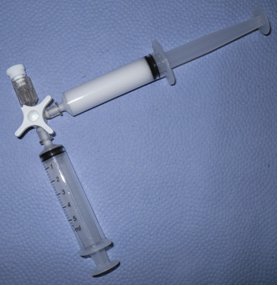This is an abbreviation for Ultrasound-Guided Foam Sclerotherapy. It is a common method used for treating varicose veins. It can be used for destroying the varicose veins themselves as well as the saphenous veins which are usually the main veins responsible for causing varicose veins. A detergent is mixed with a gas to produce the foam. Sodium tetra-decyl sulphate or polidocanol are the common detergents used. This is then injected into the vein using ultrasound to locate the exact spot where the needle enters. The procedure is performed on an examination couch in the outpatients department. Elastic graduated compression stockings are usually advised to be worn for several days.
MUSTAPHA AZZAM The procedure takes about 30 minutes. The patient is requested to bring their stockings with them. An ultrasound scan is performed first to locate the most appropriate site for the needle puncture. The syringes are prepared so that good quality fresh foam can be made on the spot. It is an entirely painless procedure and patients are warned of 2 main complications: a less than 1% chance of a DVT and a 5% chance of skin staining. Occasional light headedness and blurred vision may also occur. One or two foam injections are given into the veins whilst lying on the couch. The amount injected foam is limited for safety reasons. Following the injection the patient must lie still, leg elevated, avoiding all movements for several minutes. The thigh length compression stocking is then applied. The patient should remain in the department for at least 10 minutes before going home. Air travel and long journeys should be avoided for 3 weeks. A check ultrasound is performed 3 weeks later.
 Tap twist to improve foam quality
Tap twist to improve foam quality